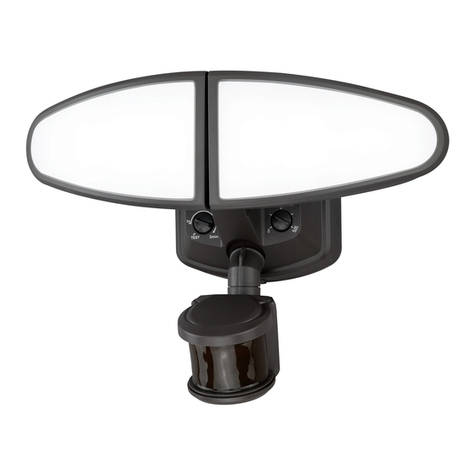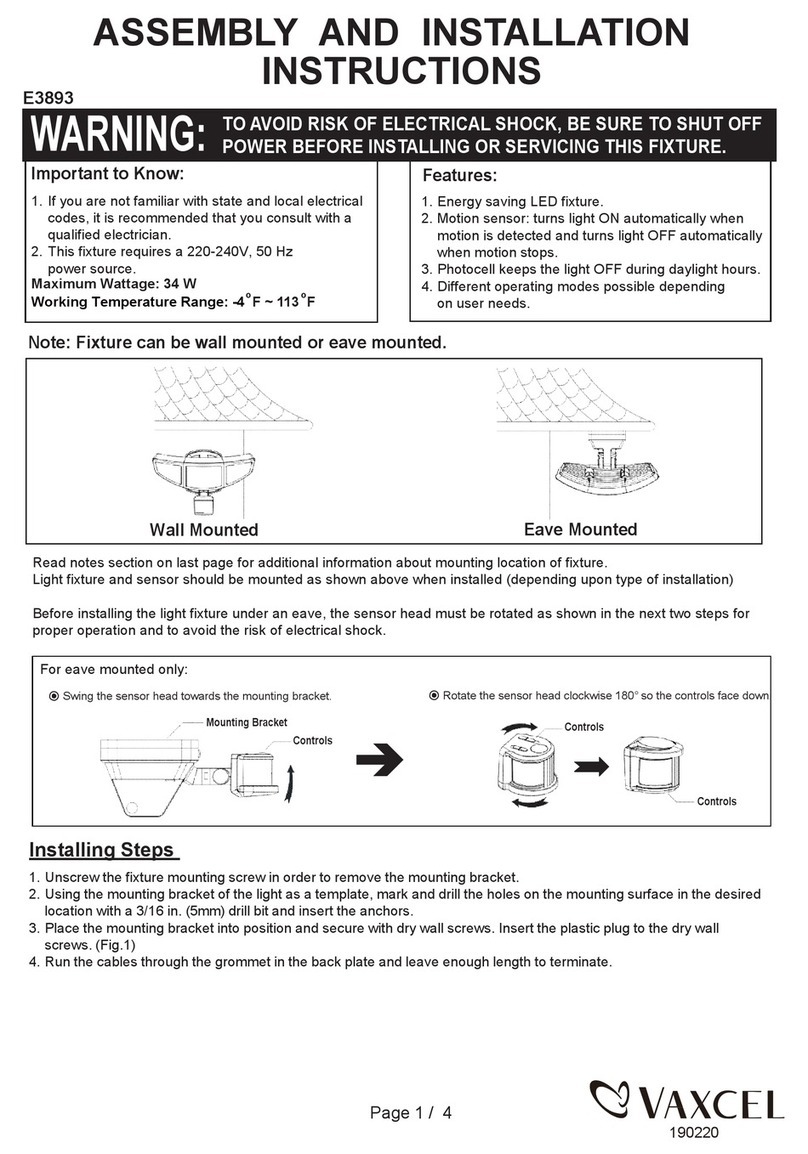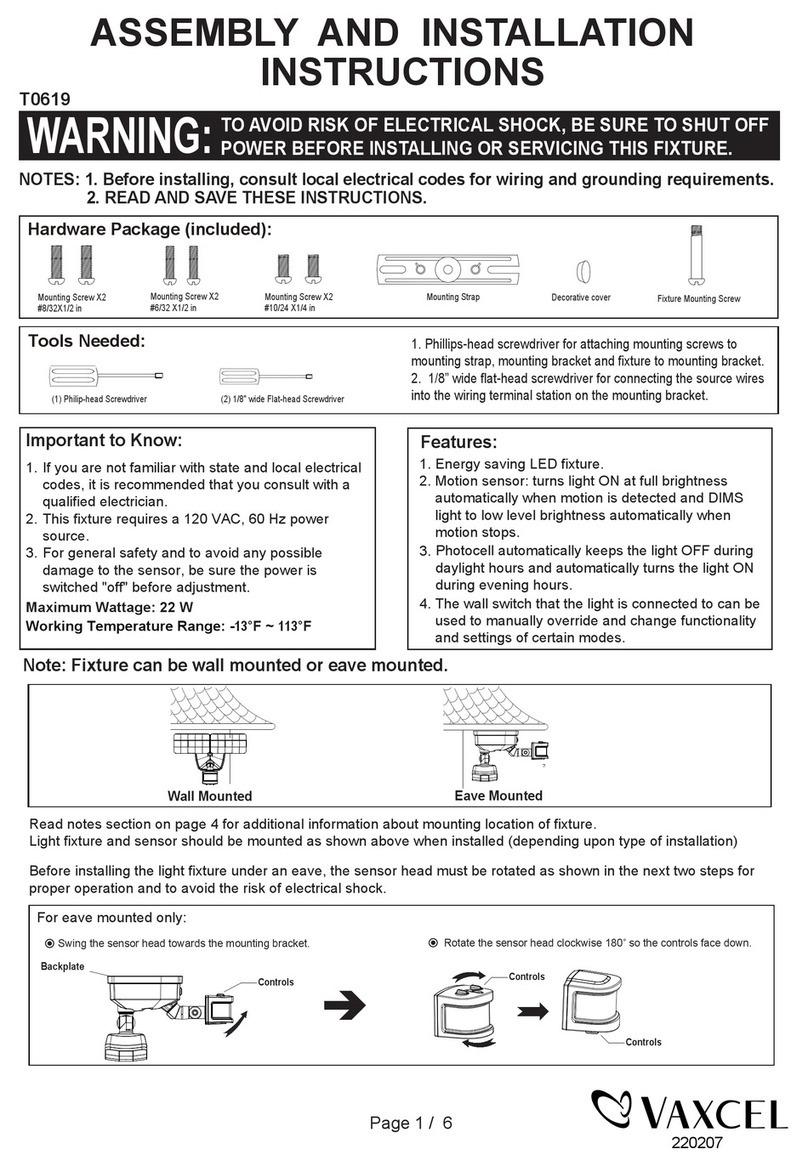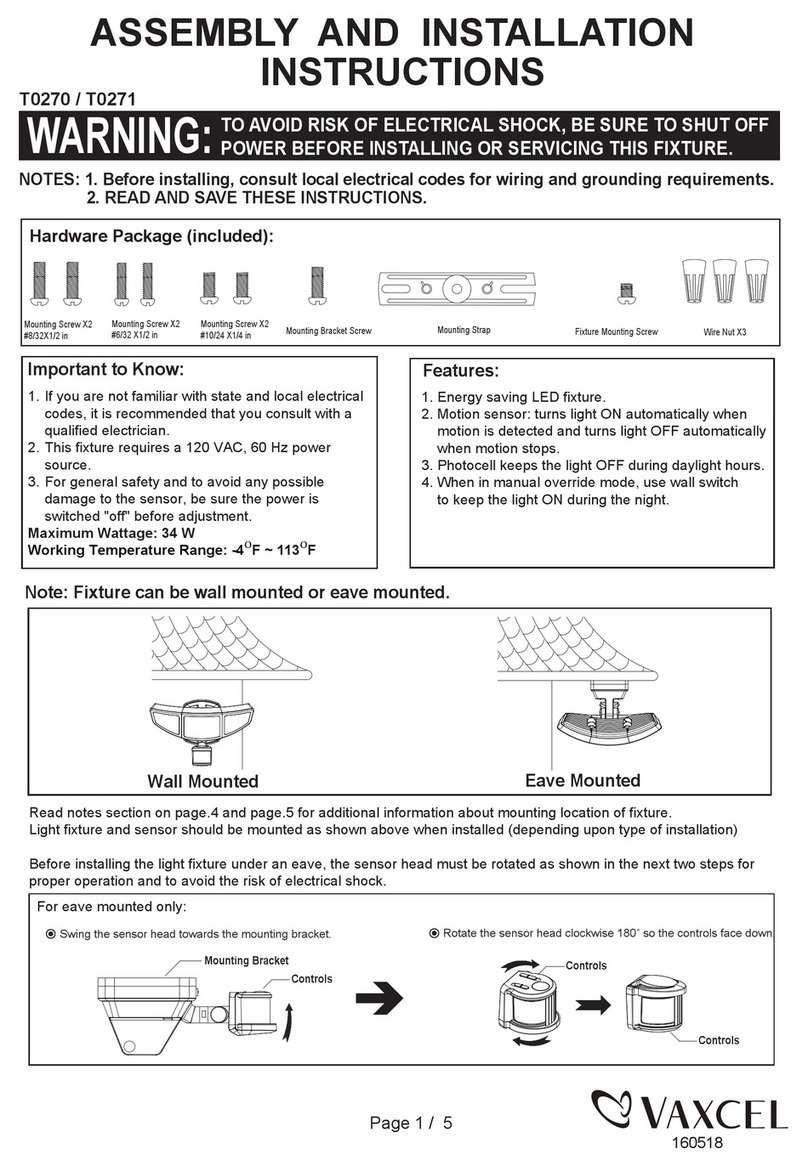
4. 3 HOURS (3H) MODE (nighttime operation only)
● Select “3H” on mode switch, slide the Time switch to the desired shut-off delay time setting (30s/1min/3min) and
select the Low Level brightness level (between 0~50%).
● At dusk, the light will turns on in early evening mode at full brightness (2700K) and remain at those settings for 3
hours.
● After the 3 hours, the light will transition to late night setting and initiate motion sensor operation. During late night
setting, the light will transition to pre-selected low level setting (0~50%) at 2700K and brighten instantly to full
brightness at 5000K whenever motion is detected.
When motion is detected, the light turns to full brightness (100%) and stays on as long as motion continues. When
motion is no longer detected, the light will remain on at full brightness (5000K) for the predetermined time you set
(30s/1min/3min), and then automatically switch back to selected low-level brightness (0~50%) and CCT
(2700K) settings.
● At dawn, the The light turns off automatically at dawn.
5. CUSTOM MODE (nighttime operation only):
●
● Select "CUSTOM" on mode switch, slide the Time switch to the desired shut-off delay time setting
(30s/1min/3min) and select the Low Level brightness level (between 0~50%).
● At dusk, the light will initially turn on in early evening setting, at full brightness (2700K), and off at dawn
automatically.
● To set a specific time for the light to transition into late night setting and initiate motion sensor operation you will
utilize the wall switch to which the light is connected. During late night setting, the light will transition to pre-
selected low level setting (0~50% brightness) and CCT setting (2700K) and brightens instantly to full
brightness at 5000K whenever motion is detected.
● To set the specific transition time, turn the wall switch to "OFF", and back to "ON" two times within 3 seconds.
The light will remember that time and go into late night setting/motion-sensor operation at that specified time
every night.
● When motion is detected, the light turns to full brightness (5000K) and stays on as long as motion continues.
When motion is no longer detected, the light will remain on at full brightness (5000K) for the predetermined time
you set (30s/1min/3min), and then automatically switch back to pre-selected low-level brightness (0~50%) and
CCT (2700K) settings.
● To revert the light back to Default, turn the wall switch "OFF" and then turn it back "ON" after 5 seconds.
6. RF LINKING NETWORK SETUP
● From all the light units you would like to link, select one as the main unit and the others as the sub-units.
● First, setup all of the sub-units by pressing the Link button two times within 3 seconds. The sub-units will flash
once every 1 second (meaning they are waiting to receive a linking signal from the main light).
● Then press and hold the main unit Link button for 5 seconds. The main unit will flash slowly (once every 3
seconds), and when the sub-units have paired with the signal, the sub-units will stop flashing
(confirming they have paired with the main unit). If pairing is unsuccessful, the sub-unit will keep flashing.
● When all the sub-units have stopped flashing, press the Link button on the main unit once to complete the pairing
process (the main unit will then stop flashing).
● After completing the pairing process, any light within the Link group range can send or receive the photo sensor or
motion sensor signal from the other light and respond accordingly.
Page 4 / 7
220209
Note: The default setting will be the same function as "PC Mode" if no specific transition time is set.
You can adjust the low-level brightness by using the low-level brightness (0~50%) knob on the bottom
portion of the backplate (See Fig.6) When light units are linked, the CUSTOM specific time setting is also
linked when MODE settings are in Custom.
Note: Maximum number of units per link group is 10 units. The maximum linking distance between lights is
120ft.
Note: The low-level brightness setting are adjustable by using the low-level brightness (0~50%) knob on the
bottom portion of the backplate (See Fig.6)
● For example, a homeowner wants to have the light stay on at full brightness (2700K) from dusk to 8pm and would
then like the light to go into late night/ motion sensor mode from 8pm until dawn. To achieve this, the homeowner
turn the wall switch "OFF", and "ON" twice within 3 seconds at 8pm. This sets the time the light goes into late
night/motion sensor mode every day at 8pm.




























